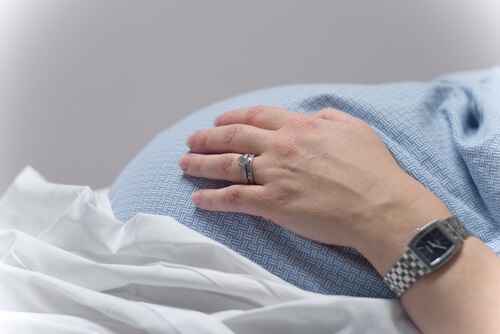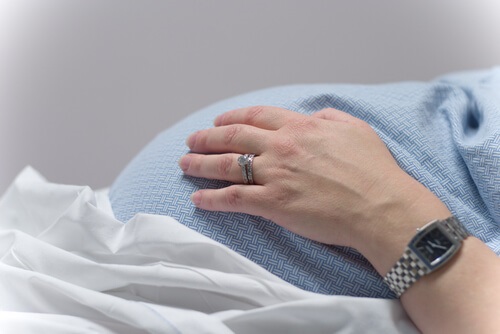
Caesarian sections, or C-sections, whether planned beforehand or performed in an emergency, pose a serious risk to the baby. Sharp medical instruments may cause lacerations that can lead to a host of other problems and injuries. That is why doctors must exercise caution when performing caesarian sections to ensure the infant is unharmed during the process as well as prevent maternal injury during C-section. Our firm has represented numerous clients to pursue compensation from negligent or careless doctors who injured their child during delivery. Whatever your situation, we can discuss your options and tenaciously uphold your right to a financial settlement.
What is Fetal Injury During C-Section?
Caesarian sections are used to remove the child from the mother’s uterus instead of using natural vaginal delivery. Sometimes, these procedures are planned prior to delivery, such as in the event of a high-risk pregnancy, when the baby is too large to fit through the birth canal or the mother’s vagina is scarred or misshapen. However, sometimes a C-section is required in an emergency, such as fetal distress or breech birth. According to a study done by the National Institutes of Health (NIH), fetal lacerations occur in about 3 percent of all pregnancies. Thus, they are a serious concern for doctors who owe a duty of care to keep mothers and infants safe and healthy.
A fetal laceration is a tear or cut that may occur during a C-section delivery due to the use of forceps, scalpels, and other instruments. Although these can be accidental, especially in extreme emergency C-section situations where physicians must act quickly, they may also be a result of improper procedures and negligence on the part of the physician, midwife, or other medical professional. Regardless of cause, these lacerations can range from mild to severe and could potentially cause long-term effects.
How Common is Fetal Laceration During C-Section?
According to the Patient Safety Authority (PSA), a study comprised of roughly 900 women who underwent C-sections showed that between 1.5 percent to 1.9 percent experienced a fetal laceration. However, other studies have put that percentage closer to six percent or three percent, as stated previously. These results are varied due to the fact that the rate of C-section deliveries has increased.
For those that do experience a fetal laceration, roughly 20 percent of those reported occured to the face, ears, and head of the infant, with around 10 percent occuring on the infant’s back.
What Causes Fetal Laceration During C-Section?
Although any C-section comes with risk of fetal laceration, there are some risk factors that increase the chances of fetal injury. These include:
- Ruptured membranes prior to the C-section
- Low transverse uterine incisions
- Active labor
- Emergency C-section
- Procedure performed by an inexperienced surgeon or resident
- Needing to cut through the placenta to get to the baby
- Undeveloped lower uterine segment (present on a uterus that has not labored)
Here’s What You Need to Know About Fetal Lacerations During C-Sections:
1. They Are Preventable
With proper care, a C-section birth injury during delivery can be prevented. This may involve using bandaged scissors or blunted instruments during the incision. Furthermore, doctors can move the mother’s uterine wall and make room for the instruments in order to avoid coming into contact with the child. This can help prevent a laceration or other injury from an instrument poking or tearing an infant’s skin.
2. They Are Treatable
If your child suffers a fetal laceration because of an improper C-section delivery, your doctor must provide immediate and accurate treatment. This may involve putting a topical tissue adhesive or band-aid on small, shallow cuts. For deeper, more serious lacerations, the doctor may use a suture to stitch up the wound to allow it to close and heal properly. Oral antibiotics may also be given to the child for a certain amount of time to help avoid infections.
3. They Have Been Linked with Other Serious Problems
Fetal lacerations occur when the instruments used in a C-section delivery, such as forceps or scissors, cut the infant’s skin. The baby’s eyes, face, arms and other exposed areas are at high risk of being torn or cut by negligent physicians. Fetal lacerations have been linked with a variety of other serious conditions. These include Erb’s palsy (paralysis of the shoulder or arm), Klumpke paralysis (paralysis of the forearm or hand), scarring, infections, cephalohematoma (pooled blood under the skin on the head), facial nerve paralysis and cervical spine injuries. Infants who have suffered fetal lacerations from improper C-section procedures should be monitored for other signs of physical harm as well.
If Your Child Has Suffered Fetal Lacerations, Pursue Compensation with the Help of Our Attorneys
At The Simon Law Firm, P.C., we have guided numerous clients through the Missouri legal system with fetal injury and wrongful death claims in St. Louis. If your son or daughter was the victim of fetal lacerations from a negligent physician, we can represent you. Our compassionate St. Louis birth injury and medical malpractice lawyers have the experience to build your case, and we can use effective legal strategies as you seek the maximum amount of compensation. Our firm can talk to witnesses, request medical records, and use other evidence to prove the negligence or carelessness of your doctor.
Contact our firm today for a free consultation, and seek justice for your case.







